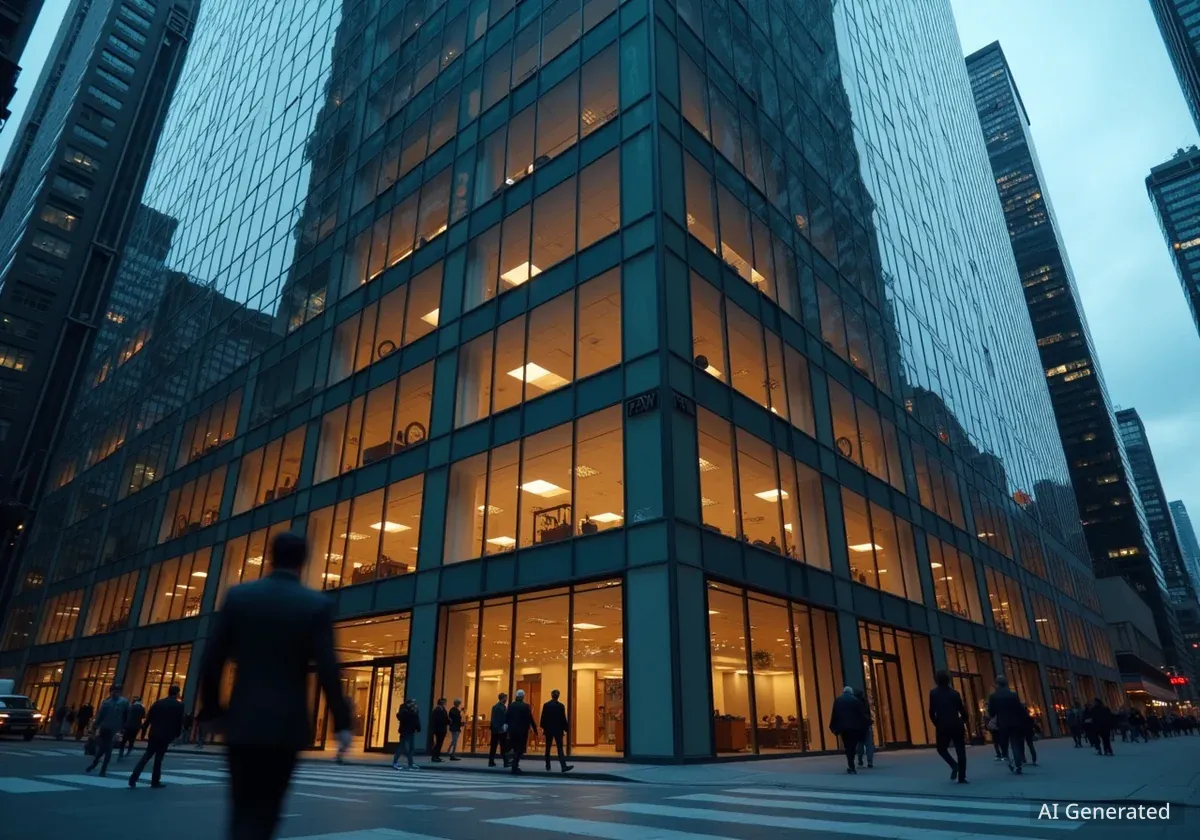The commercial real estate sector, particularly office properties, is experiencing a fundamental transformation driven by high interest rates, a significant amount of maturing debt, and shifting lender attitudes. This environment is creating a clear divide in the market, where a portion of office buildings face potential obsolescence while new investment opportunities emerge for specialized capital providers.
As traditional banks reduce their exposure, private credit and special situation investors are stepping in to fill a critical financing gap. This shift is reshaping how distressed real estate assets are funded and managed, placing a new emphasis on operational expertise over passive investment.
Key Takeaways
- The office market is split, with 30% of buildings accounting for 90% of vacancies and facing a difficult recovery.
- Traditional bank lending for commercial real estate has slowed to an 11-year low, creating a significant financing void.
- Private credit has grown 50% in four years to a $1.7 trillion market and is projected to reach $2.6 trillion by 2029.
- Special situation investors are using tools like rescue capital and distressed debt acquisition to capitalize on market dislocation.
- Operational expertise is becoming more critical than ever for investors to succeed in the current high-cost environment.
A Divided Office Market
The current landscape for office buildings is not uniform. A significant portion of the market is struggling, while another shows potential for stabilization. According to analysis from industry experts, approximately 30% of office buildings are responsible for 90% of the total vacancies. These properties are considered to be at high risk and may never fully recover their previous value or occupancy levels.
In contrast, the remaining 70% of office properties have a chance to adapt and stabilize over time. This group typically includes newer, high-quality buildings in desirable locations with modern amenities that appeal to tenants in a post-pandemic work environment. This division highlights a flight to quality, where companies are consolidating into premium spaces, leaving older, less desirable buildings behind.
The End of an Era
The challenges facing the commercial real estate market stem from the end of a decade-long period of near-zero interest rates and abundant liquidity. This era allowed for easy financing and compressed capitalization rates. The current economic climate, marked by persistently higher interest rates, has reversed these conditions, leading to what some experts call a perfect storm of maturing debt, tighter lending standards, and declining property values.
Traditional Lenders Step Back
Financial institutions are growing increasingly cautious about their exposure to commercial real estate, especially the office sector. This pullback is creating significant gaps in the market for property owners needing to refinance or secure new loans.
In May, the Federal Reserve Bank of St. Louis reported that commercial real estate loan growth at banks had fallen to an 11-year low. This statistic underscores the broader trend of banks tightening their lending criteria and reducing their overall risk in the sector.
Federal Reserve Warning
The Federal Reserve Bank of New York has issued public warnings that risks associated with commercial real estate will likely weigh on banks' balance sheets for years to come. This long-term outlook from a key regulatory body signals that the current lending environment is not a short-term fluctuation but a sustained shift.
This retreat by traditional lenders is a primary driver of the current market dislocation. With fewer financing options available from banks, property owners, particularly those with distressed or transitional assets, must look for alternative sources of capital.
The Rise of Private Credit
As banks pull back, the private credit market is expanding rapidly to fill the void. This sector, which involves non-bank institutions lending directly to companies and property owners, has become a major force in real estate finance.
A Market in Expansion
The private credit market has seen explosive growth, increasing by 50% over the last four years to become a $1.7 trillion industry. Projections indicate this growth is set to continue. According to estimates from Morgan Stanley, the private credit market could expand to $2.6 trillion by 2029.
This type of capital is often more flexible and can be deployed more quickly than traditional bank loans, making it an attractive option for complex situations. Investors in this space are providing essential financing through various instruments, including:
- Preferred equity
- Mezzanine debt
- Bridge loans
- Rescue capital
These financial tools are designed for properties that do not qualify for conventional financing, such as those undergoing renovation, facing occupancy challenges, or needing to bridge a gap before stabilization.
A New Investment Strategy Emerges
The current market conditions have given rise to a strategy known as "special situation investing." Originating in the hedge fund world, this approach focuses on capitalizing on market dislocations where traditional funding is unavailable due to complexity or distress.
"Special situation investing will win the day," noted Greg Friedman, CEO of Peachtree Group, in a recent commentary. He emphasized the need to differentiate between cyclical stress, like a hotel needing a bridge loan for renovation, and structural obsolescence found in challenged office assets that may never recover.
Investors pursuing this strategy act as problem-solvers. They often acquire non-performing loans from banks or purchase distressed property debt, frequently at a significant discount. This allows them to take control of assets with a lower cost basis, providing more flexibility to invest in improvements and reposition the property for future success.
Operational Expertise Is Now Key
In this new real estate cycle, passive ownership is no longer a viable strategy. With property expenses like insurance premiums, labor costs, and taxes rising sharply, hands-on management and operational efficiency are critical for success.
Investors who have the capability to manage properties directly hold a distinct advantage. They can implement cost-saving measures, improve property performance, and respond quickly to market changes. This operational bandwidth is something many newer entrants into the private credit space may lack.
According to industry insiders, the firms best prepared to navigate this environment are those with "battle-tested" teams that have experience across various economic cycles. These established players have the infrastructure and expertise to underwrite complex deals and execute operational turnarounds effectively. The winners will be strategic operators who can actively manage both capital market complexities and property-level challenges.





